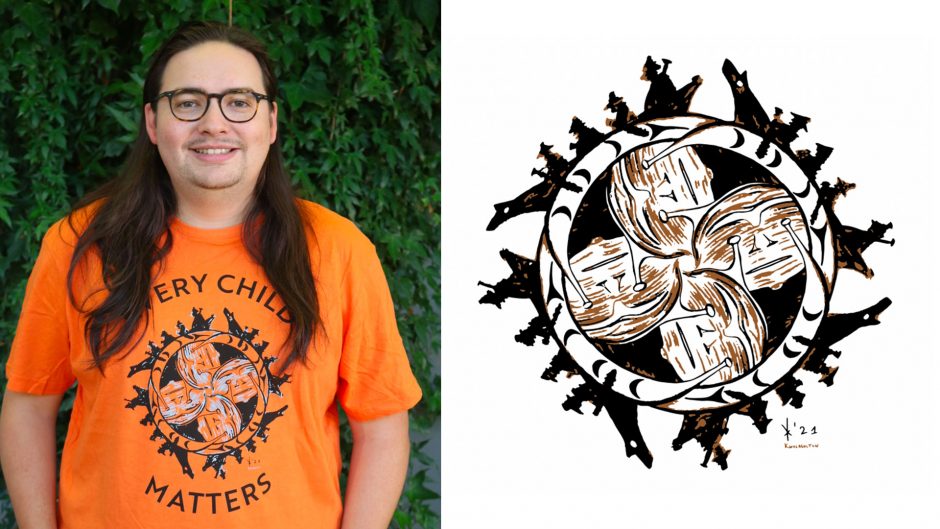Artist & Artwork 2021

For 2021, Eliot White-Hill created the artwork Truth. Learn more about the artist’s intention and intended message in the video below. Learn more about the artist’s intention and intended message in the video below.
About the Artist
Eliot White-Hill, Kwulasultun is a Coast Salish artist who comes from the White family of Snuneymuxw, the Rice family of Penelakut, the Hamilton family of Hupacasath in the Nuu Chah Nulth world, and is of mixed Western European descent. He is a published author and artist, who sees all his work artistically as an extension of his storytelling. He works to tell the stories that have been passed down by his people from generation to generation, to preserve knowledge that they carry and the profound significance of the way his ancestors saw the world through both written and visual narrative. He also seeks to tell new stories. To find ways of interweaving teachings that he has received with his experience and understanding of the modern context. To walk in both worlds and tell stories that speak to new generations of Indigenous peoples.
Artist’s Statement
This artwork represents the truth from my perspective as a Coast Salish and Nuu Chah Nulth person and the grandson of a Residential School survivor. I draw upon traditional Coast Salish style and art to express this narrative. With this art I hope to honour the children, to speak to them and tell them that we remember them and that they are so loved and so missed.
The design is a spindlewhorl, which are some of the strongest instances of our art that we still have. The spindlewhorl is a thing of movement, of creation, and of transformation in a cyclical way; they are used in the spinning of wool which will then be used to make something new. For me, the spindlewhorl encompasses so much about our teachings, the wealth of who we are, and the ways that we should be in the world. The use of four in the patterns of this design is significant; four is xu’athun in Hul’q’umi’num and is derived from xe’xe’ which is “sacred.” Things in our world are done in fours. Here it represents all of the different Indigenous peoples.
The design shows the faces of the children. Children from all different peoples who were taken from their homes and families and communities to then be abused and experimented upon, and, in countless cases, murdered. This thing called Canada stole them from us. Their sqiqulus, their profound grief and sadness, is our inheritance as a nation. Their tears are our reality. This is the world that we live in. This is an irrevocable fact of the Indigenous experience in so-called “Canada.” It is the water that we paddle through. This is the truth.
The canoes and people paddling shows how we are coming together and how we are paddling together in this world. we are navigating together in this world. We are navigating these realities. We are all different peoples with our own cultures and traditions but we are experiencing the same things, the same sqiqulus. This work poses the question: where do we go from here?
I do not have an answer. It is so difficult to look beyond grief of such scale to try to find land on the horizon; but what i know is that the teachings our ancestors passed down to us tell of movement and transformation, and that we are never stuck.